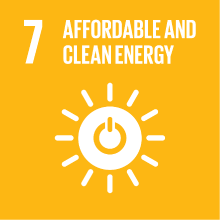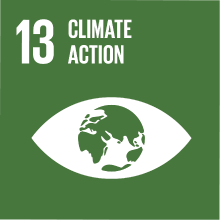COASTAL GEOLOGICAL PROCESSES AND RISKS
- Academic year
- 2025/2026 Syllabus of previous years
- Official course title
- PROCESSI E RISCHI GEOLOGICI COSTIERI
- Course code
- CM0621 (AF:521956 AR:293131)
- Teaching language
- Italian
- Modality
- On campus classes
- ECTS credits
- 6
- Degree level
- Master's Degree Programme (DM270)
- Academic Discipline
- GEO/04
- Period
- 1st Semester
- Course year
- 2
- Where
- VENEZIA
- Moodle
- Go to Moodle page
Contribution of the course to the overall degree programme goals
Through an integrated approach combining theory (30 hours) and practice (18 hours), the course allows students to analyze geomorphological and hydrodynamic processes that shape coastal areas and assess the main risk factors: erosion, sea level rise, extreme meteorological and marine events, and changes induced by infrastructure or land use.
The theoretical part equips students with conceptual tools for analyzing coastal processes, while the practical part focuses on the application of numerical models using the open-source software XBeach to simulate coastal hydrodynamics, with the support of Python and open-source environments.
The course also aims to develop cross-cutting skills relevant to professional work and coastal environmental planning, such as the ability to critically analyze complex coastal scenarios, risk assessment, and the drafting of technical reports based on real data and numerical simulations.
Expected learning outcomes
• Knowledge and understanding: in-depth understanding of coastal geomorphological and hydrodynamic processes, including erosion, sedimentation, storm surges, sea-level rise, and the interactions between climatic forces and human activities; knowledge of the main methodologies for numerical coastal modeling.
• Applying knowledge and understanding: ability to use tools such as Python and XBeach to perform numerical simulations of coastal events; critical interpretation of model input/output data and results, with a geomorphological and management-oriented perspective.
• Making judgements: ability to independently evaluate coastal risk scenarios by selecting relevant parameters and considering the limitations and uncertainties of simulations; formulation of management recommendations based on technical and scientific evidence.
• Communication skills: ability to write a complete and well-structured technical report using appropriate terminology, figures, maps, and relevant bibliographic references.
• Learning skills: ability to integrate heterogeneous sources (scientific articles, datasets, digital tools) and to autonomously update skills in coastal geomorphology and modeling.
The acquired competencies, both theoretical and practical, can be applied in professional fields that require the ability to analyze and manage coastal risk, such as environmental planning, civil protection, impact assessments, design, and technical consultancy.
Pre-requirements
• Earth Sciences, Sedimentology, and Geomorphology: to understand the physical processes shaping coastal environments and to critically interpret phenomena such as erosion, sedimentation, and shoreline changes.
• Basic Physics: particularly principles of hydrodynamics and sediment transport, which are useful for understanding how coastal models work.
• Digital tools for spatial analysis: basic skills in using QGIS to read and represent geographic, topographic, and morphological data.
• Basic programming skills: preferably in Python, MATLAB, or R, to manage simple numerical modeling scripts.
Students without prior experience in programming can rely on supplementary materials provided by the instructor (video tutorials and annotated scripts), available on Moodle, which will allow them to acquire the minimum skills required to complete the practical exercises.
Contents
The first part includes a review and update on coastal geomorphology, with a focus on the main coastal landforms (sandy beaches, rocky coasts, deltas, barriers) and the processes that shape them (wave action, currents, tides).
It then addresses the analysis of coastal processes across different temporal and spatial scales: from short-term storm events to sea-level rise, subsidence, and long-term climate change effects.
The core of the course focuses on the study of coastal hazards, including erosion, marine inundation, slope instability, human impacts (urbanization, coastal infrastructure), and integrated geological risks.
Considerable attention will be given to the presentation of analytical methods used in the study of coastal systems, including:
• Satellite and drone-based remote sensing
• Ground-based topographic surveys
• Use of open-access datasets on waves, tides, extreme events, and coastal morphology
A specific section introduces the use of coastal numerical models, with examples of the XBeach model applied to simulate the impact of storms on sandy coasts. This component will be developed through a hands-on classroom exercise (18 hours).
Finally, the course may include, subject to availability, thematic seminars with experts from research and professional fields, to explore real case studies and operational approaches to coastal risk management.
Referral texts
• Slides provided by the instructor, summarizing the contents covered during both theoretical and practical lessons. The slides are made available on Moodle at the end of each teaching block.
• Video tutorials for self-directed learning, useful for deepening the topics covered and completing the practical exercises. The tutorials include:
• Introduction to the use of the XBeach numerical model;
• Step-by-step guidance on how to use the Python scripts provided by the instructor;
• Instructions for analyzing and visualizing coastal data.
• Supplementary reading materials selected by the instructor (scientific articles, technical reports, open-access datasets), available on Moodle.
Assessment methods
1. Multiple-choice written test (worth 2/3 of the final grade)
2. Technical-scientific report (individual or group) (worth 1/3 of the final grade)
1. Written Test
The written test consists of 33 closed-ended questions (1 point each, no penalties for incorrect answers), to be completed in 90 minutes. Questions may cover all theoretical content taught during lectures or provided as supplementary materials on Moodle.
Note: Everything uploaded on Moodle may be subject to exam questions.
A score higher than 30/30 on the written test qualifies for cum laude, which will be calculated in the final grade as 33/30.
2. Technical-scientific Report
Each student, or a group of up to 3 members, must prepare a technical-scientific report based on the analysis of a pre-assigned coastal area, using digital tools such as Python and XBeach for numerical modeling.
Submission Rules:
• One submission per group, with a shared grade
• Submission must meet the deadline communicated by the instructor
• Ongoing feedback available during lab sessions to improve the report
• 1 point will be deducted for each day of delay
• Failure to submit = exclusion of the entire group from the final exam
• In case of insufficient evaluation, a new deadline will be assigned
• Submission must occur via Moodle, following instructions provided in class
Report Evaluation Criteria:
• Completeness and accuracy of geomorphological and coastal risk analysis
• Effective and correct use of digital tools and numerical models
• Clarity and correctness of scientific and technical writing
• Quality, relevance, and proper attribution of graphics, maps, and images
Final Grade Calculation:
Example: Written test = 28/30; Technical report = 30/30
→ Final grade = (28 × 2/3) + (30 × 1/3) = 28.67 → 29
This assessment approach verifies:
• Theoretical mastery of coastal geological processes and risks
• Application skills in modeling and real-world scenario analysis
• Communication skills in scientific-technical writing
• Autonomous learning ability and critical use of course materials
Type of exam
Grading scale
• Multiple-choice written test – worth 2/3 of the final grade
• Technical-scientific report – worth 1/3 of the final grade
1. Written test
Score equals the number of correct answers out of 33 (1 point each, no penalties for incorrect answers). The grading scale is as follows:
• 18–22/30: basic but generic knowledge
• 23–26/30: fair knowledge, good understanding of core concepts
• 27–30/30: complete knowledge, excellent command of terminology and concepts
• 30 cum laude: at least 31 correct answers; excellence in reasoning and terminology (counted as 33/30 in the final average)
2. Technical-scientific report
Graded out of 30 points, based on two dimensions (content and form), according to previously defined criteria:
• 18–22/30: sufficient analysis with significant weaknesses in content or form
• 23–26/30: good consistency in sources, structure, and tool usage
• 27–30/30: excellent report, well-argued, with critical insight and effective maps/graphs (cum laude counted as 33/30 in the final average)
Final grade calculation (weighted average)
• Example: Written test = 28/30; Report = 30/30 → Final grade = (28 × 2/3) + (30 × 1/3) ≈ 29
• Cum laude, if awarded in either component, is counted as 33/30 in the final average
Teaching methods
• Lectures: introduce the fundamental concepts of coastal geomorphology and related geological risks, with insights into analytical methods, data interpretation, and coastal hydrodynamic modeling.
• Thematic seminars: meetings with professionals and academics (subject to availability during class hours) presenting real-world case studies and innovative approaches to coastal risk management, encouraging dialogue and exposure to research and professional practices.
• Lab activities: practical sessions where students work in small groups using digital tools (e.g., Python, XBeach) to analyze a specific coastal site and produce a structured technical-scientific report based on data processing and numerical modeling.
Supplementary teaching materials, such as video tutorials and operational guides for using digital tools (e.g., QGIS, Google Colaboratory, scripts for coastal modeling), will be made available on the Moodle platform to support independent learning and complement in-class activities.
The course structure promotes collaborative learning through group work and encourages autonomy in problem-solving, in line with the learning objectives of a master’s degree program.
Further information
Ca’ Foscari complies with Italian law (Law 17/1999; Law 170/2010) regarding the support services and accommodations available to students with disabilities or specific learning disorders. If you have a motor, visual, hearing, or other disability (Law 17/1999), or a specific learning disorder (Law 170/2010), and require support (in-class assistance, technological aids for exams or individualized exams, accessible-format materials, note-taking support, specialized tutoring, interpreters, or other services), please contact the Disability and SLD Office at: disabilita@unive.it.
2030 Agenda for Sustainable Development Goals
This subject deals with topics related to the macro-area "Climate change and energy" and contributes to the achievement of one or more goals of U. N. Agenda for Sustainable Development


